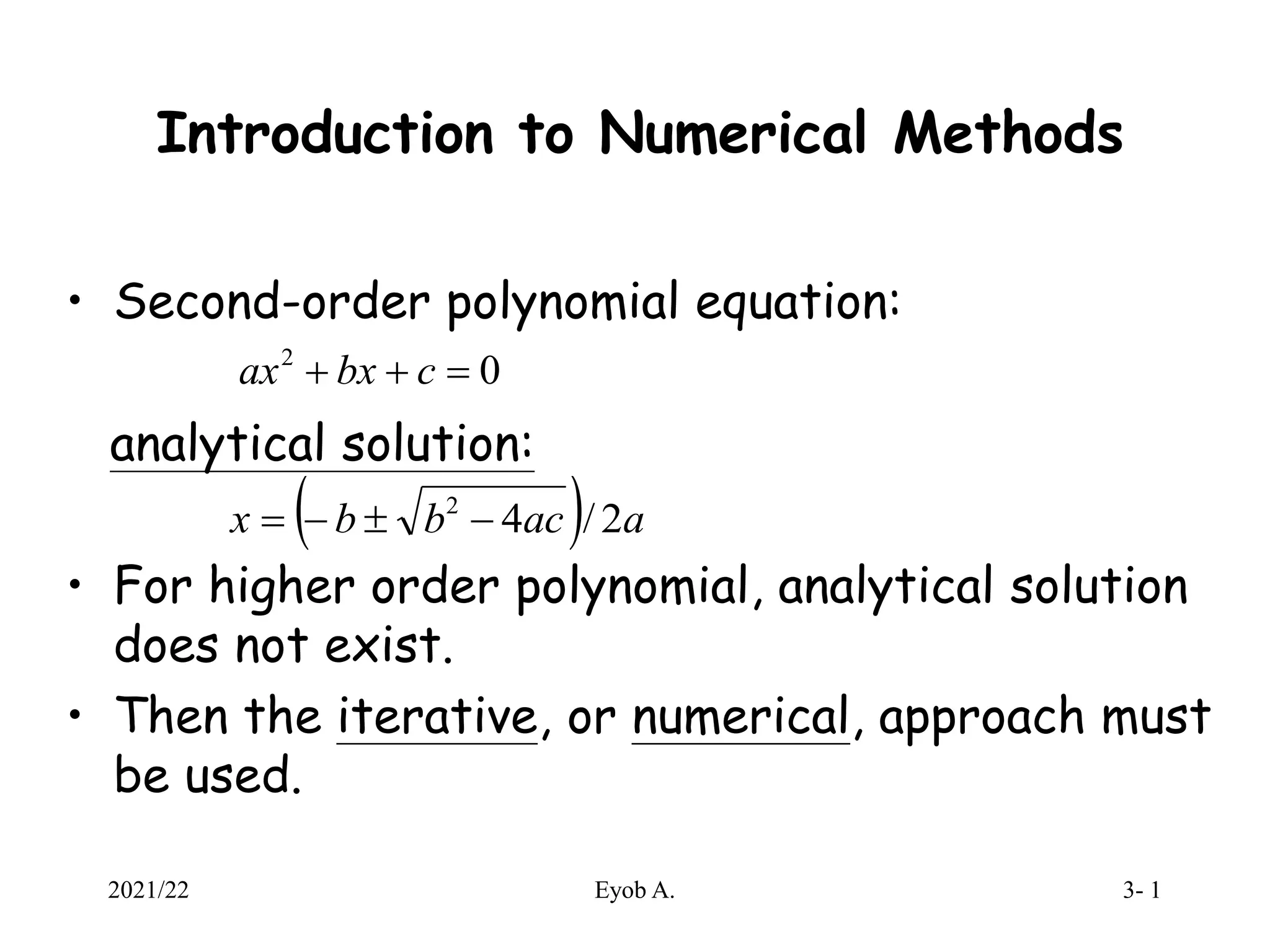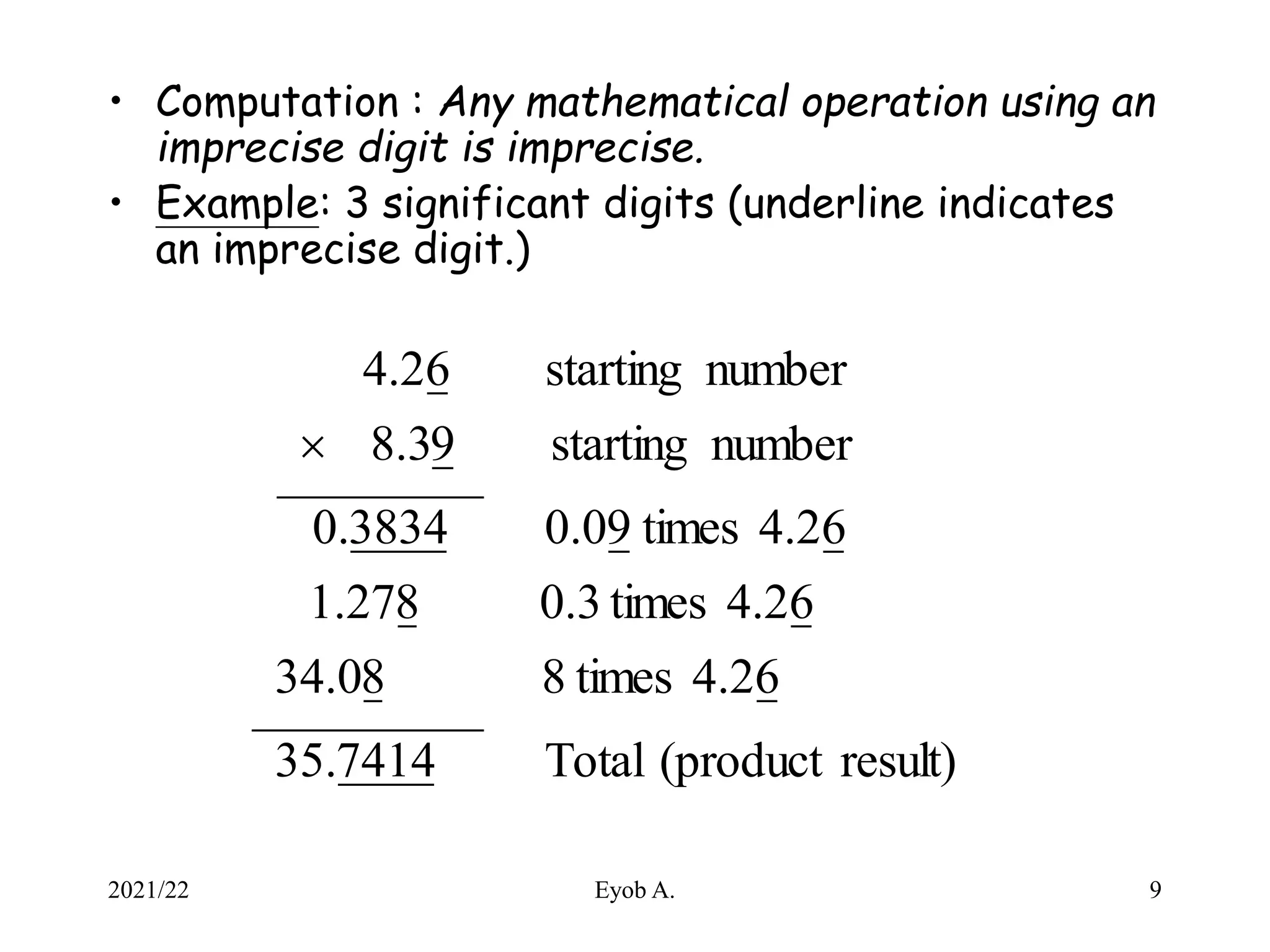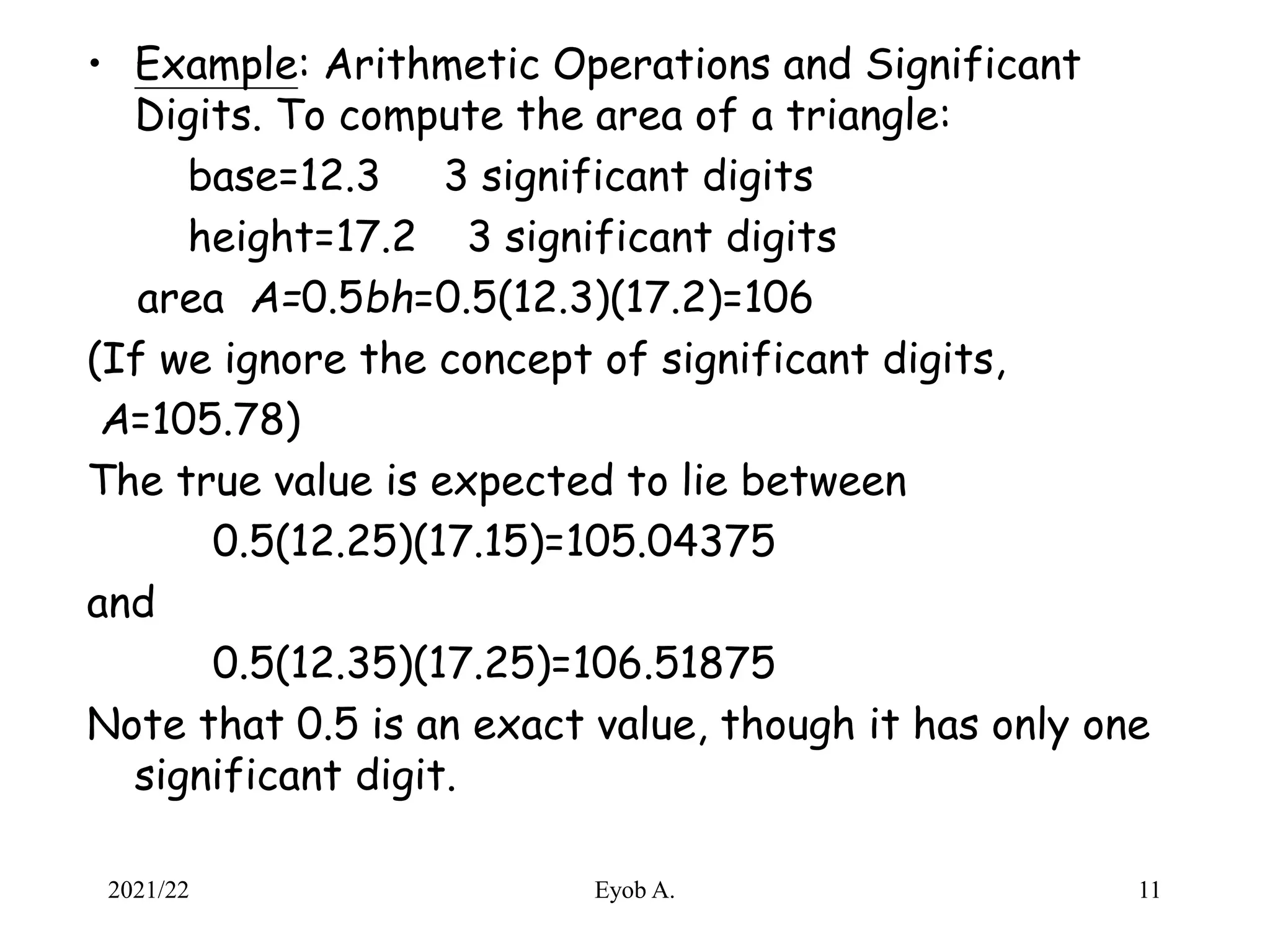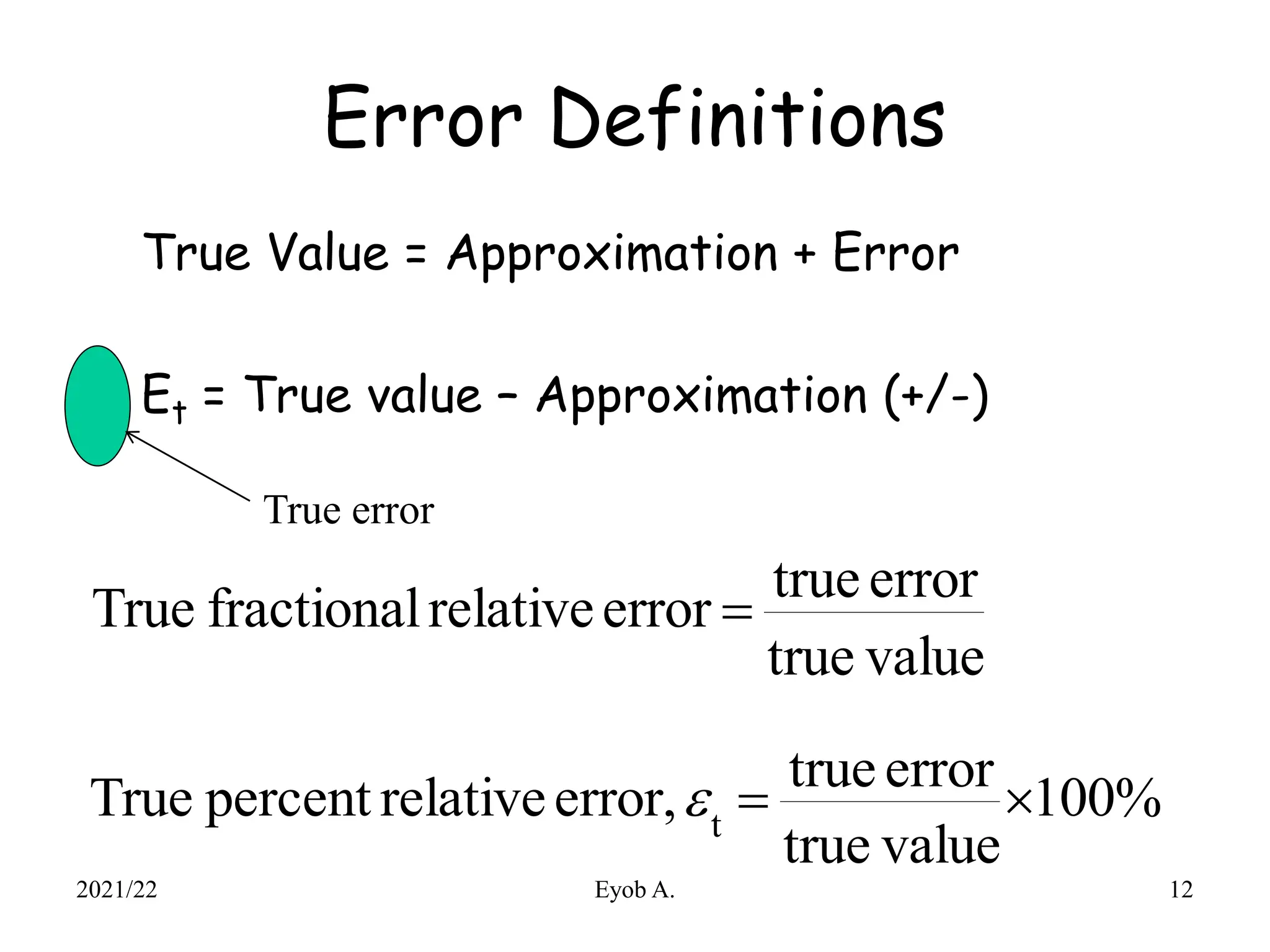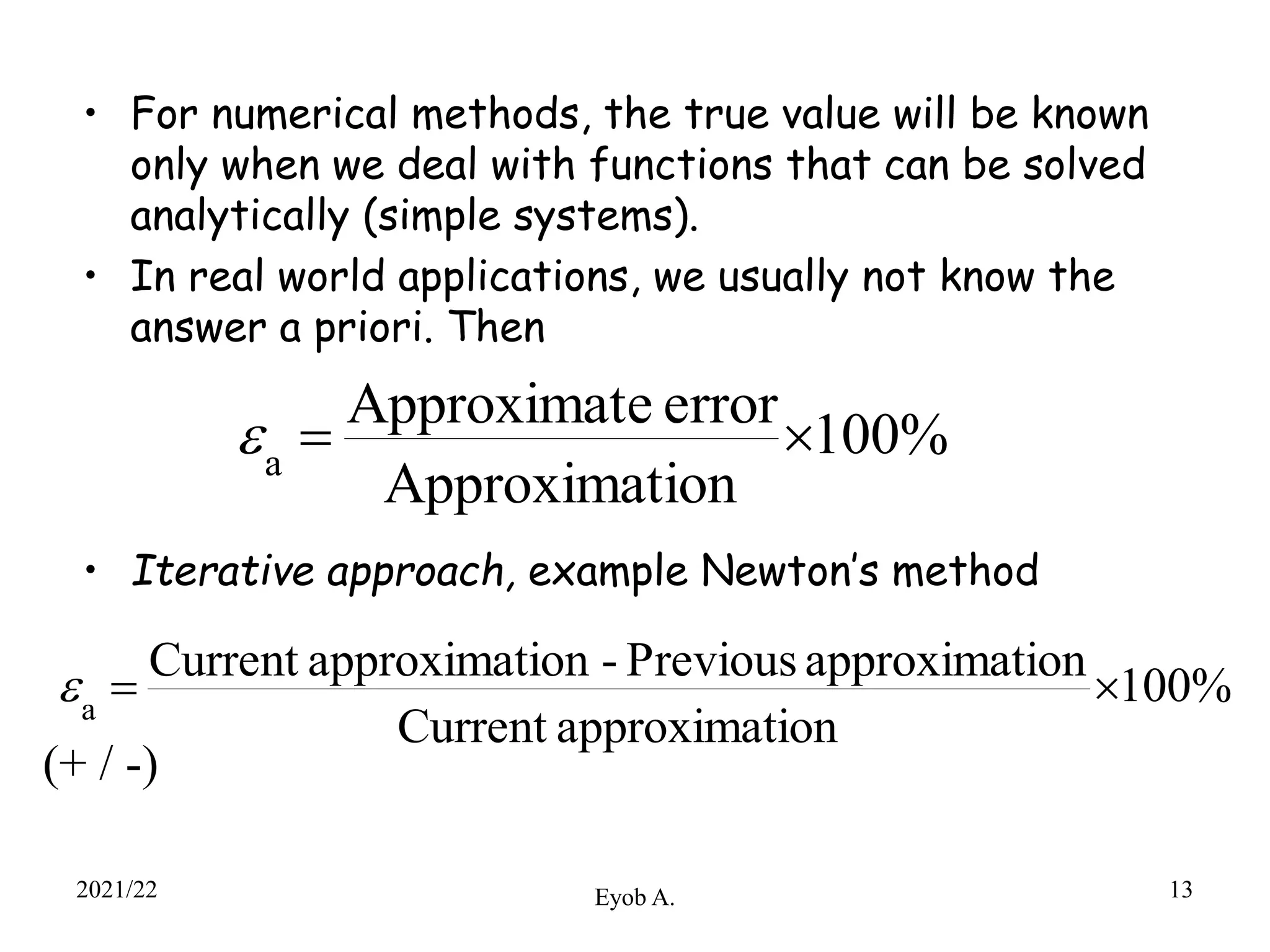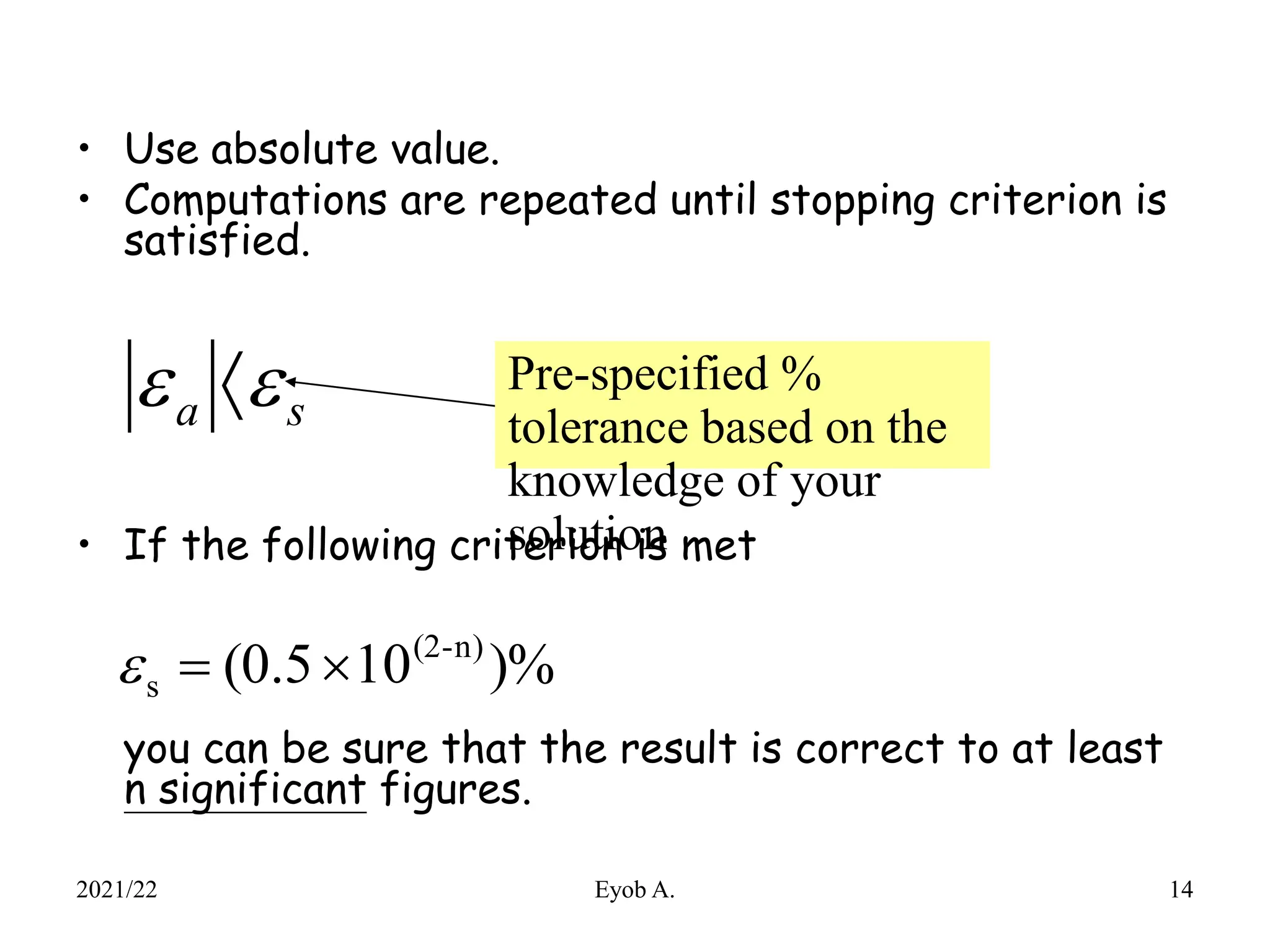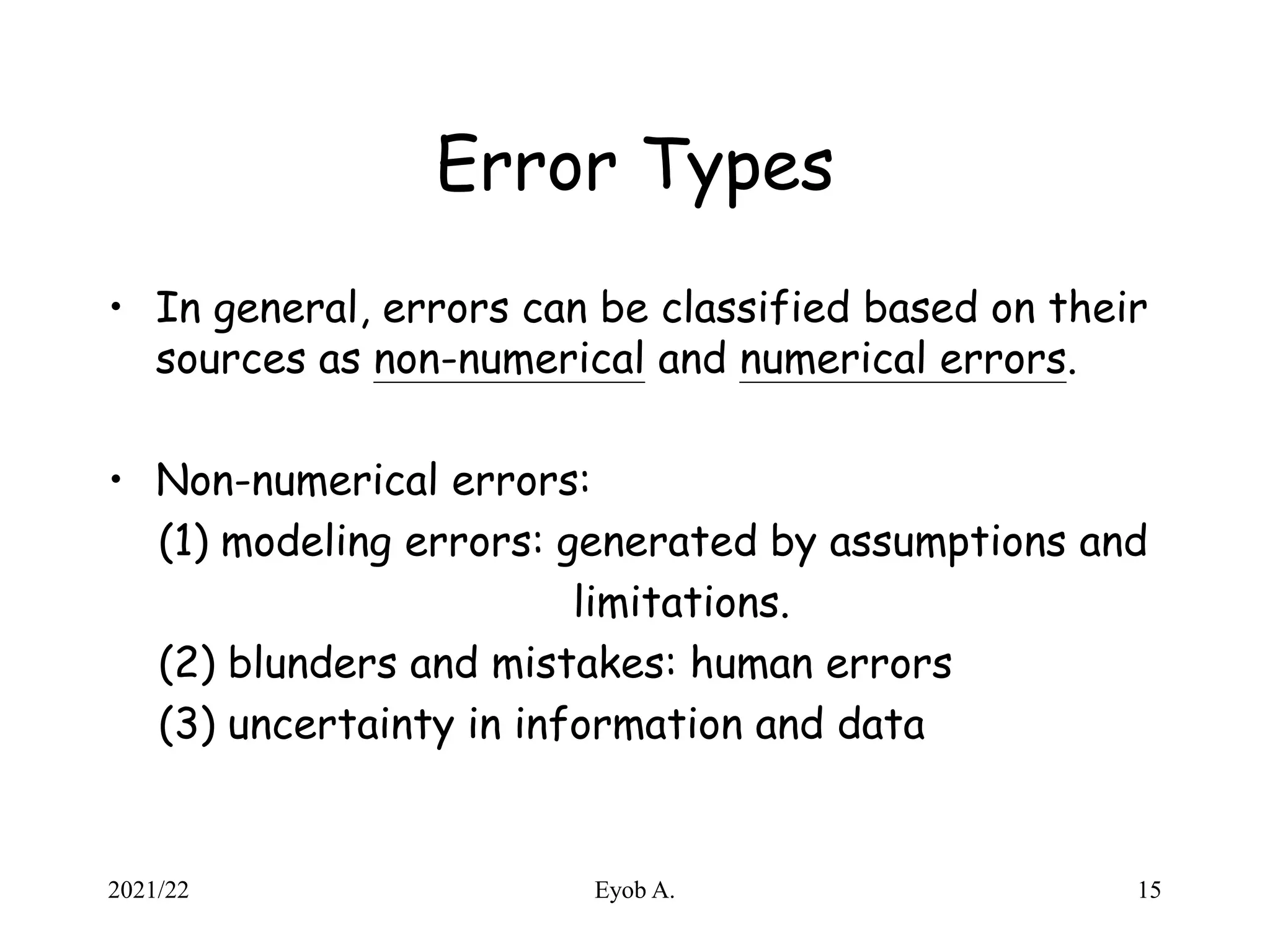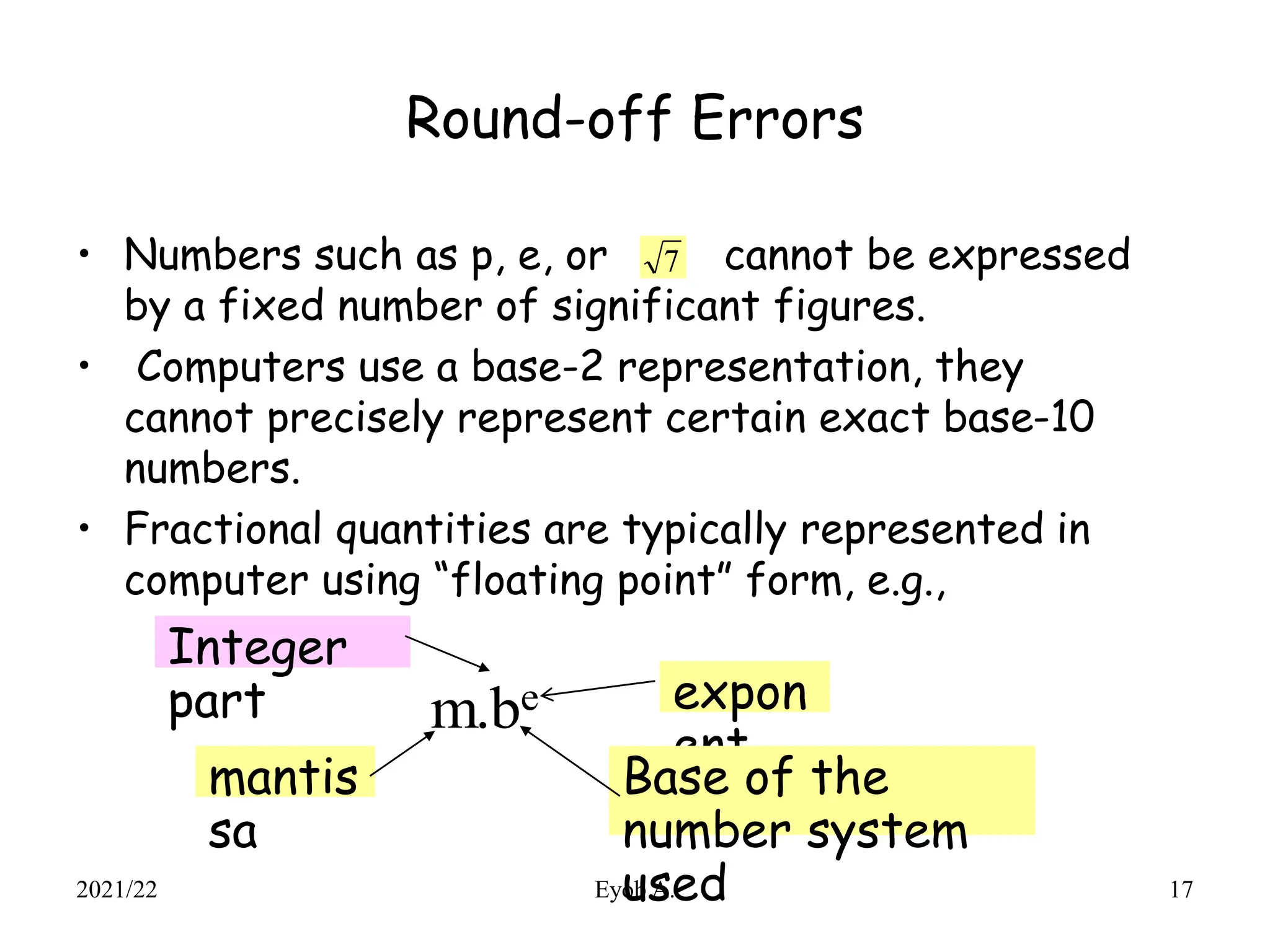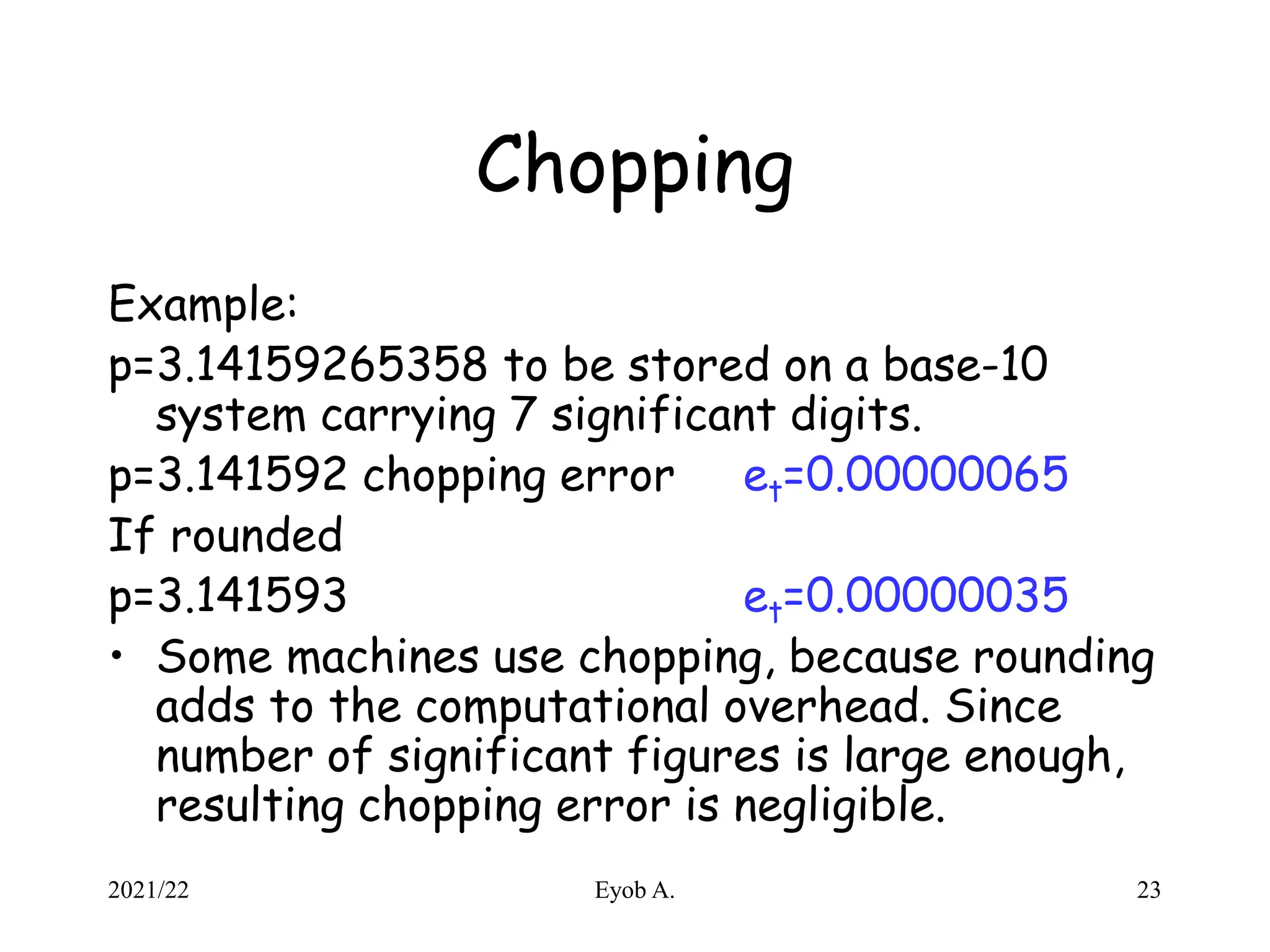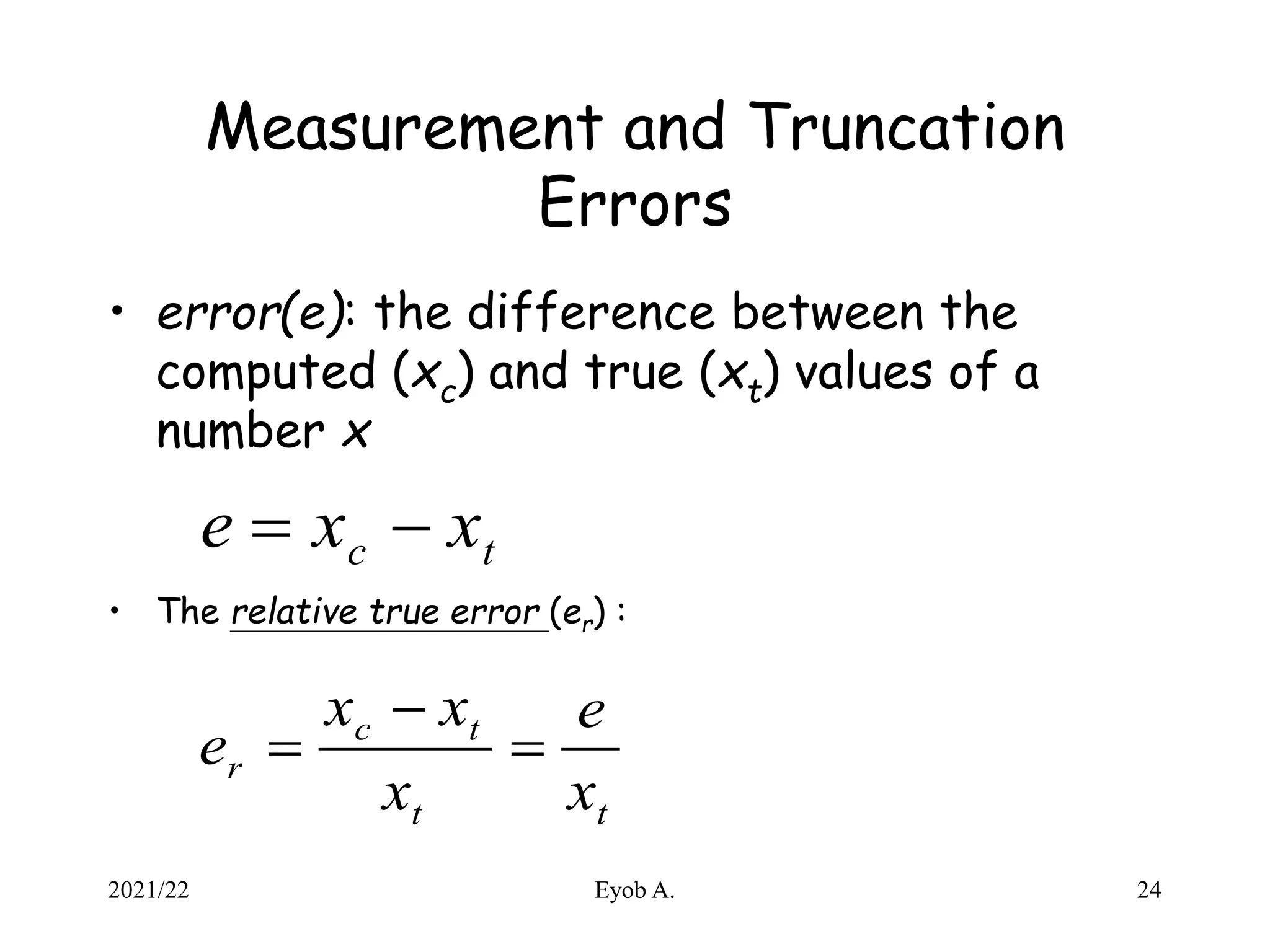This document provides an introduction to numerical methods. It discusses how numerical methods are used to find approximate solutions to problems where an exact analytical solution does not exist, such as higher order polynomial equations. Numerical methods are iterative and provide approximations that improve in accuracy with each iteration. Examples of numerical methods covered include finding the square root of a number and solving a second order polynomial equation. The document also discusses concepts such as error analysis, significant figures, rounding, and sources of numerical errors.
